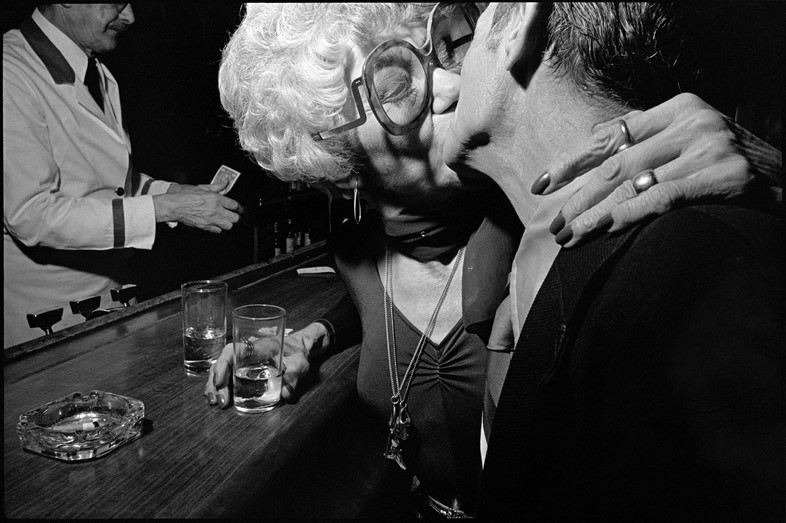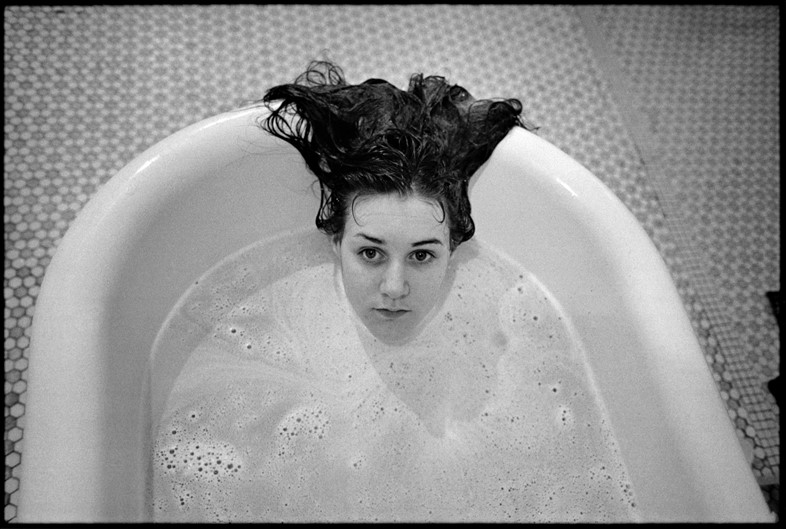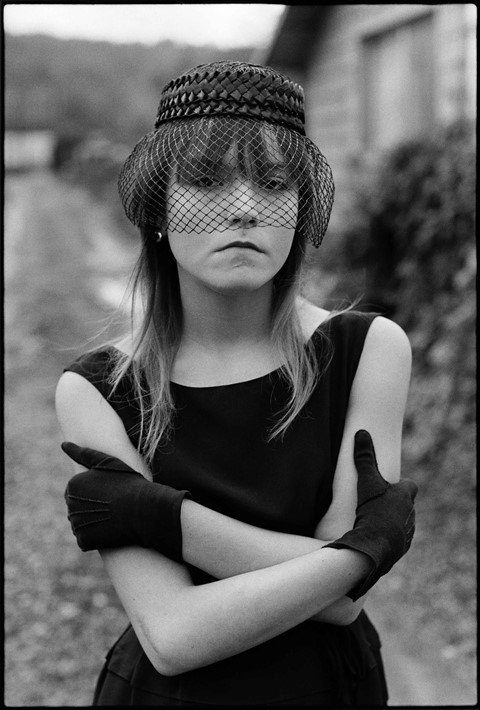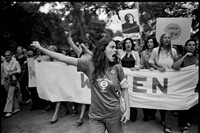As the first career-spanning survey of the American photographer’s work opens at C/O Berlin, its curators reveal the stories behind five of her most captivating works
A girl who appears to be no older than eight or nine years old stands in a paddling pool, one arm crossed, the other nonchalantly toting a cigarette, clasped between taloned fingers. She gazes towards, but not at, the camera, exhaling smoke with a casual confidence. A hippo angles a gaping yawn towards an adjacent circus performer, the span of its open mouth almost matching her in height, as if it could engulf her with a single snap of its jaws.
You could be forgiven for mistaking many of the images taken by the late US photographer Mary Ellen Mark for film stills – perhaps from a Larry Clark or Federico Fellini movie, in these instances – but that is not the case. As Mark herself once said, “Reality is always extraordinary.” And upon entering C/O Berlin’s latest exhibition, Mark Ellen Mark: Encounters, it’s obvious that from her earliest snapshots onwards, Mark had an unwavering, exceptional ability to capture moments that attest to this fact – for better or worse, to humorous or humbling effect.
The Pennsylvania-born imagemaker was fascinated by other people and their stories, their lives and their lived environments. Whether photographing on assignment, which she did frequently for publications including Time, Life, and New York Times Magazine, or for personal projects; whether turning her lens to celebrities or those existing on the fringes of society, she approached all of her subjects with the same curious, non-judgemental eye, deftly blurring the boundaries between photojournalism and portraiture.
The C/O Berlin show features images from all of Mark’s most renowned projects, including Ward 81, centred on inpatients of the women’s security ward at the Oregon State Hospital, Indian Circus, a behind-the-scenes look at India’s travelling circus troupes, and Streetwise, a documentation of Seattle’s homeless youth. While working on the latter series, Mark encountered 13-year-old Erin Charles (known as Tiny), a girl she would form a lifelong relationship with, returning to photograph her again and again over the years – a testament to the strong connections she strove to forge with each of her subjects, whom she would often live alongside for weeks at a time while shooting.
Here, to mark the opening of the show – the first ever retrospective of Mark’s work – its curators Melissa Harris and Sophia Greiff talk us through five of the show’s most striking images, each demonstrating the technical skill, deep empathy, and knack for storytelling that underscores her six-decade-spanning oeuvre.

Kissing in a bar, New York, 1977
Melissa Harris: “Mark came to New York in 1967, and she loved it. It was the perfect place for her because there was so much activity – everything from protests and demonstrations, to nightlife, beach-life, and everyday streetlife. And certainly she would have been drawn to looking at the bars, because she liked performance, she liked spectacle. She was not remotely shy, so she probably went into this bar and spoke to the couple. And it wouldn’t have just been the kiss that caught her eye: it would have been the woman’s hair, the big glasses, that gesture with her hand, the guy behind the bar with the cash, all of it. It has humour, and it doesn’t have sentimentality. Mark wasn’t a sentimental photographer, although she was very emotional.”
Sophia Greiff: “We chose this image as a key visual because the title of the retrospective is Encounters, and Mary Ellen Mark’s work is so much about getting to know people, being interested in them, about intimacy, relationships. This image really embodies the way that she worked.”

Feminist demonstration, New York City, 1970
MH: “Mark came of age during the heyday of the women‘s rights movement in the US, and she often went to demonstrations, marches, protests. She was a feminist: she was very supportive of women, she was a very successful woman, she was assertive, she was all in. So she would have really enjoyed the energy of this scene, which is another good example of her street photography. You get the action, the gesture, the spectacle.”
SG: “It’s also a very timeless image; it could have been taken today.”

Oregon State Hospital, Salem, Oregon, 1976
SG: “Mark first learned about Ward 81 when she was photographing on the set of the movie One Flew Over the Cuckoo’s Nest, which was filmed on location at a public psychiatric institution – Oregon state Hospital. She asked to meet some of the women on the ward, and after that brief encounter, she understood that their story must be told.”
MH: “She spoke with all of the women she photographed, but I think Laurie, who’s pictured here, she got to know quite well. Laurie was obviously very comfortable with Mark and she shows up a lot in the series. I think it‘s important to note that this is not a revealing portrait in the sense that you see the subject naked, but there‘s a vulnerability that is revealed or evoked here – another kind of intimacy. She obviously knows Mary Ellen is there, but she's not staring at her directly. It‘s a really curious photograph, the graphics of it, everything about it.”
SG: “Lots of Mark’s images, like this, are very strong single images that condense a story into one picture, and are great portraits too, where you see how close she got to her protagonists and how much they trusted her.”

Contortionist with Sweety the Puppy, Raj Kamal Circus, Upleta, India, 1989
MH: “Mark loved animals – they could be wild, they could be pets, they could be performers, and they appear throughout her work again and again. And she was also a great photographer of children. They liked her; she didn‘t condescend to them. She just was curious about them in the same way she was about anybody else. This girl was a performer, of course, and she’s obviously very comfortable in front of the camera. In terms of composition, it’s interesting to see how her legs mirror the shape of the tents behind.”
SG: “What’s interesting about this whole series is that Mark is showing the performers going about their daily life behind the scenes – the way they live, the way they practise, the community that forms around the circus, the sense of extended family. Also their relationship with the animals – they really depend on each other, and the animals are treated really well.”

Tiny, Halloween, Seattle, Washington, 1983
MH: “Mark was a storyteller, and she understood that to tell the story, you need good characters. And she immediately recognised that Tiny, who was only 13 here, was a great protagonist. The first time she saw her was in a parking lot and, as you can see on the wall text, she later recalled, ‘They looked like little girls playing “dress up” and they were amazing. I approached them, introduced myself, and asked if I could spend time with them to take pictures. They both started to giggle and ran toward a waiting car.’ This picture of Tiny in her Halloween costume was the beginning of a relationship that lasted until Mark’s death in 2015. Again, you get the whole thing here: you get the protagonist, then the iconic image within the larger story, like the bathtub, and you also get how they‘re living – even though it‘s kind of receding into the background, there is still a sense of place.”
Mary Ellen Mark: Encounters is on show at C/O Berlin until 18 January 2024. An accompanying catalogue, published by Steidl, is out now.



